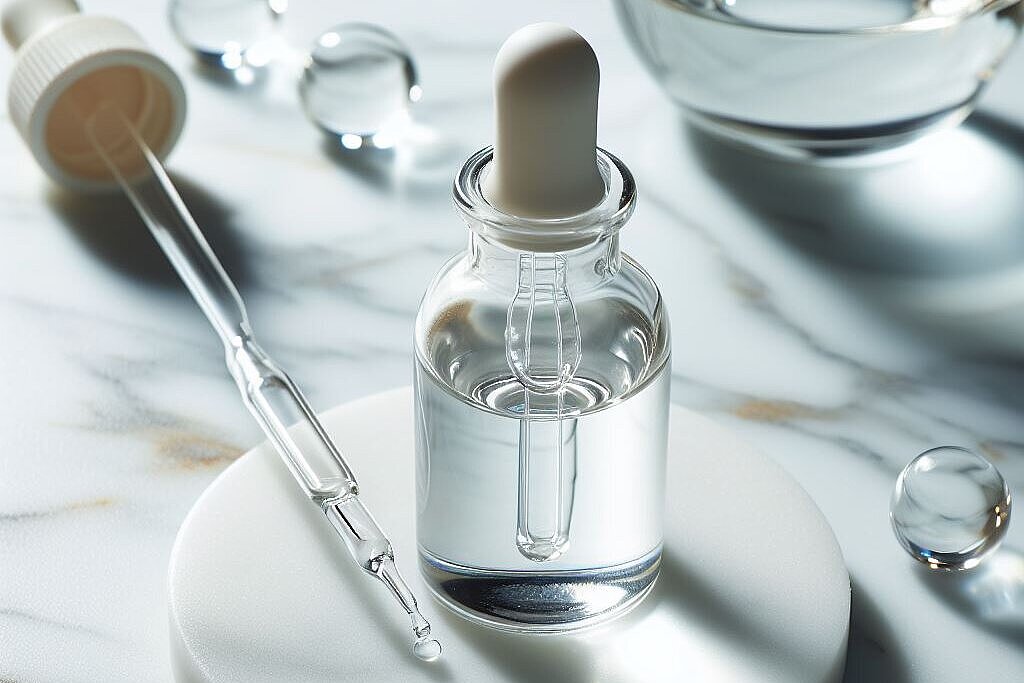Potassium permanganate

In the world of dog care, owners and vets alike come across a variety of products and substances designed to support the well-being of our four-legged companions. One such substance that has been used for years in certain situations is potassium permanganate. But what exactly is potassium permanganate, and what are the advantages and disadvantages of using it? This article provides an in-depth look at the subject and aims to help dog owners make an informed decision about the use of this chemical.
What is potassium permanganate?
Potassium permanganate (KMnO4) is a strong oxidizing agent that comes in the form of dark purple crystals or granules and dissolves in water with a characteristic deep purple color. It is used in various areas, from water purification to medical disinfection. In veterinary medicine, potassium permanganate is used in the treatment of certain skin diseases and as a general disinfectant.
Advantages of potassium permanganate
Disinfection and treatment
- Effective disinfectant: Potassium permanganate can be used to disinfect wounds or treat skin infections in dogs. It kills bacteria and helps to speed up healing.
- Treatment of skin conditions: It is sometimes used to treat parasitic skin conditions such as demodicosis or to clean infected wounds.
Safety when used correctly
- Safe when used diluted: When used in a highly diluted form and under expert guidance, potassium permanganate can be a safe option for the topical treatment of certain skin conditions.
Disadvantages of potassium permanganate
Risks and side effects
- Chemical burns: Incorrect dilution or handling of potassium permanganate can cause chemical burns to the dog's skin or mucous membranes.
- Ingestion Toxicity: Potassium permanganate is toxic if ingested and can cause severe gastrointestinal problems including vomiting, diarrhea and in severe cases ulceration of the digestive tract.
Handling and storage
- Careful handling required: Handling requires caution and protective measures to avoid skin contact or inhalation of the powder.
- Safe storage: It must be stored safely and out of the reach of children and pets to avoid accidental exposure.
Use with caution
Potassium permanganate can be a useful tool in dog grooming in certain circumstances, particularly when treating skin infections and disinfecting wounds. However, its use requires a high degree of caution due to the potential risks and side effects. It is essential that any use of potassium permanganate is done on the advice and under the supervision of an experienced veterinarian. In addition, dog owners should always look for alternative, less risky treatments and only consider potassium permanganate as a last resort. The health and safety of our dogs should always be paramount and the use of chemicals in their care requires careful consideration of the pros and cons.
If you notice any signs of hypersensitivity or poisoning in your dog, you should see your vet immediately. We are not a substitute for a vet, but we try to be as accurate as possible. Every dog reacts differently and we recommend you get a second opinion or consult your vet if in doubt.
Stay healthy and take good care of your four-legged friend!😊
Similar to Potassium permanganate
Hydrogen peroxide is a pale blue liquid that is colorless in diluted form and soluble in water and organic solvents. It is known for its oxidizing properties, which make it an effective disinfectant...
Chlorine dioxide (ClO₂) is a yellowish gas with a characteristic, chlorine-like odor. It is known for its strong antimicrobial effect and is therefore used in various areas such as water treatment,...
Silver nitrate (AgNO3) is an inorganic compound that is formed by dissolving silver in nitric acid. It crystallizes in colourless, transparent crystals that dissolve easily in water. Silver has been...
Sodiumhypochlorite (NaClO) is a chemical compound of sodium, oxygen and chlorine. It is formed when chlorine is introduced into a sodium hydroxide solution. The resulting liquid, often referred to...



